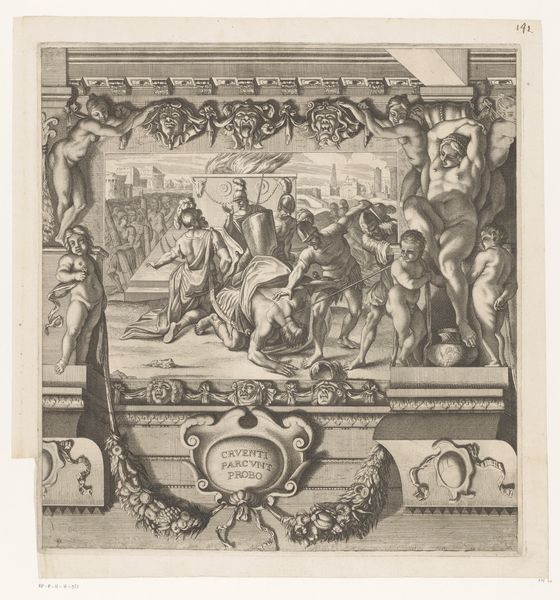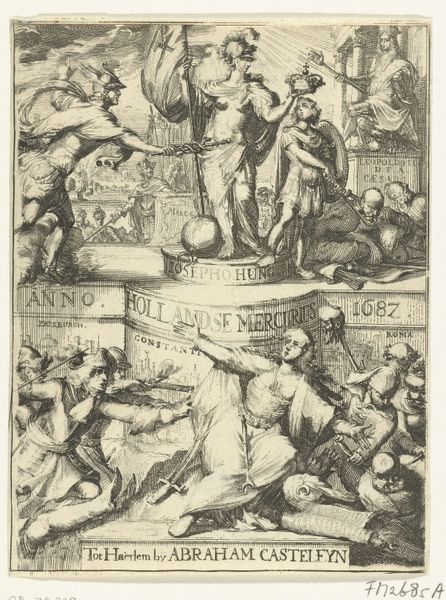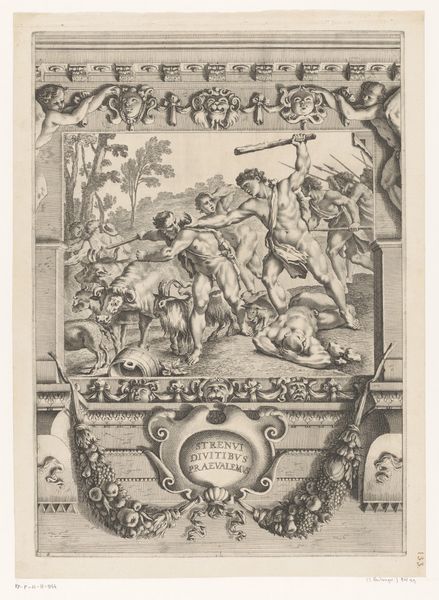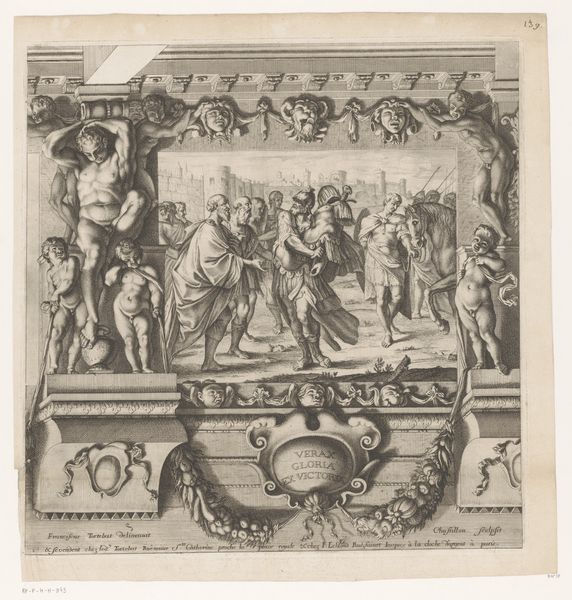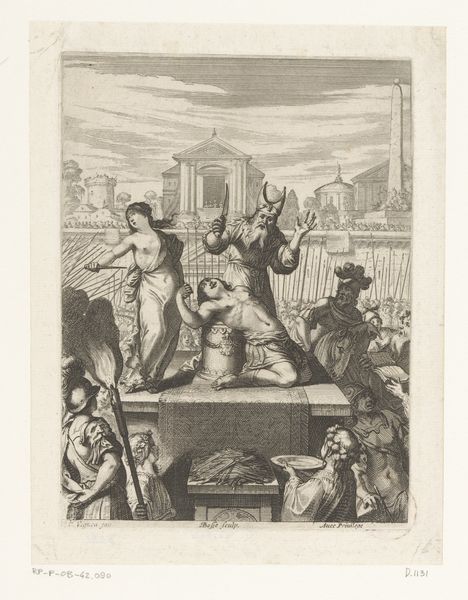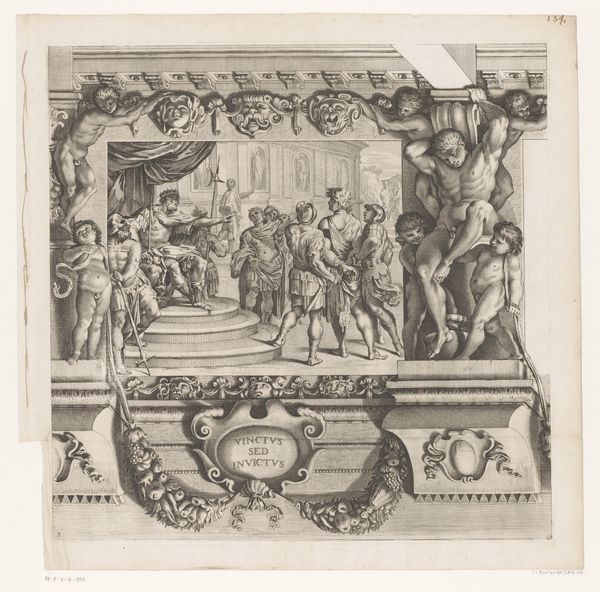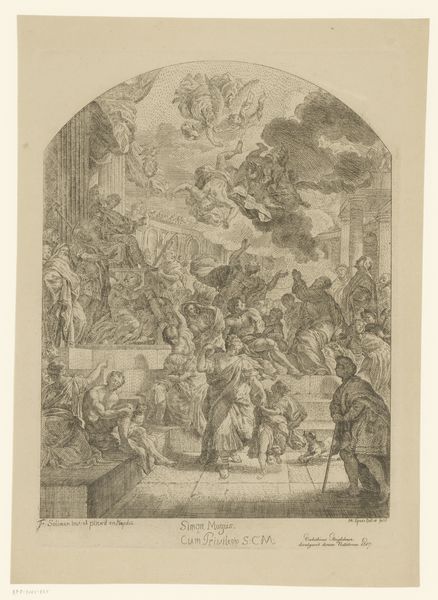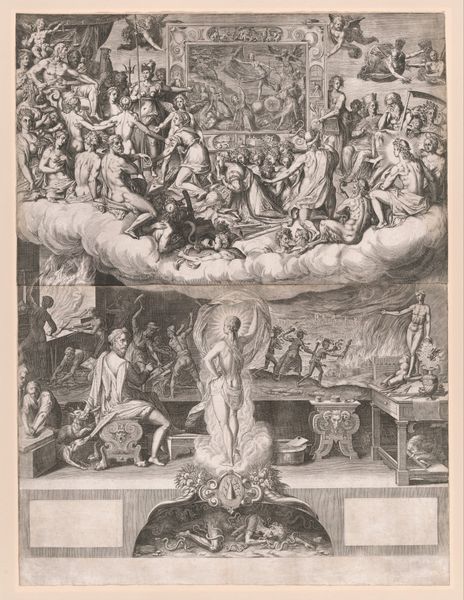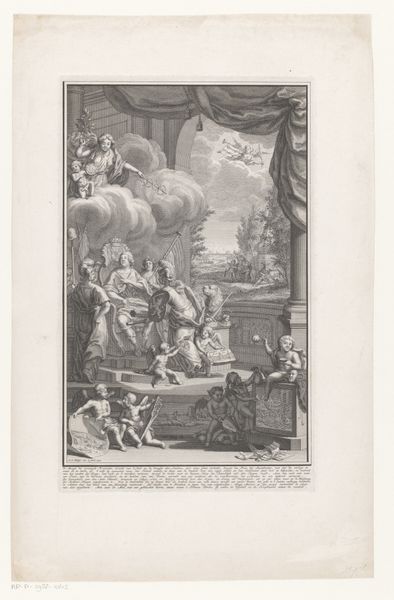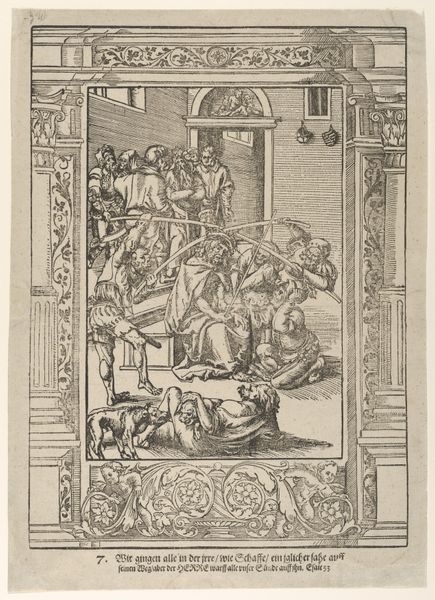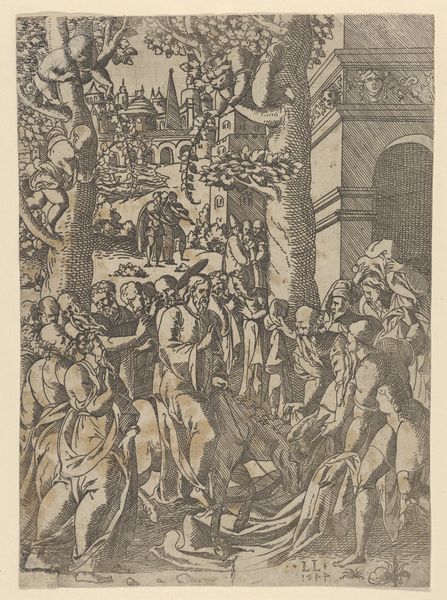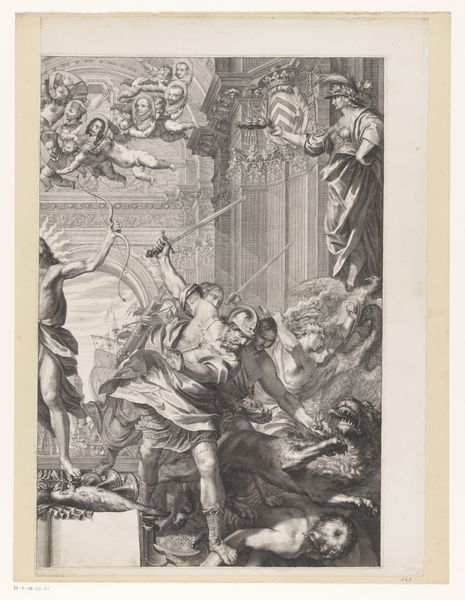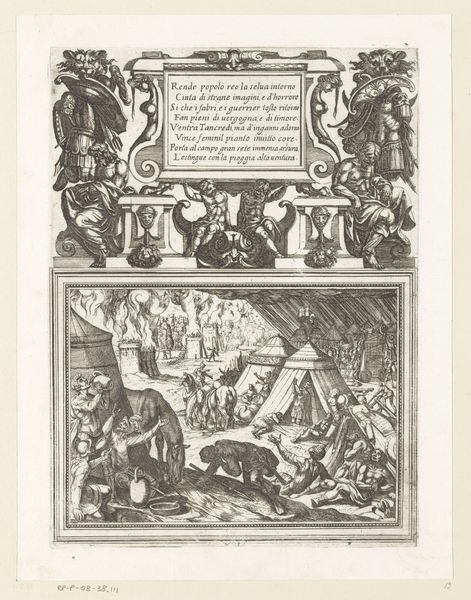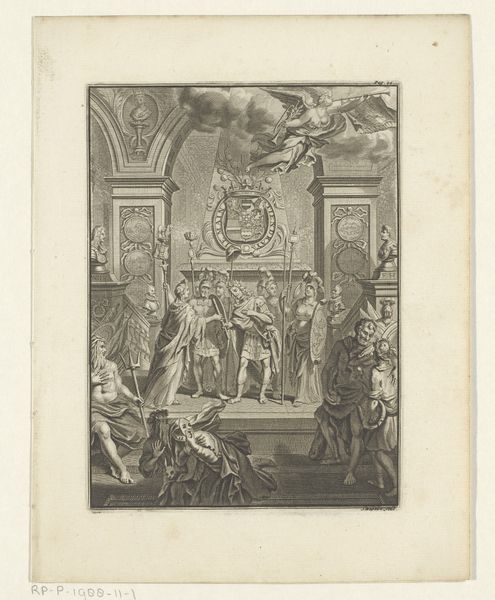
print, engraving
#
baroque
# print
#
old engraving style
#
figuration
#
history-painting
#
engraving
Dimensions: height 450 mm, width 299 mm
Copyright: Rijks Museum: Open Domain
Editor: Here we have Louis de Châtillon’s engraving, "Sabijnse maagdenroof," from 1659, currently at the Rijksmuseum. It’s a very busy scene. Honestly, my first impression is… chaotic, with a clear sense of violence and struggle depicted. How do you interpret this work? Curator: It is certainly chaotic, and purposefully so. The title translates to "The Rape of the Sabine Women," referencing a foundational myth of Rome. But I urge you to look beyond the immediate drama. This wasn’t simply a historical event for the 17th century; it was a justification, a patriarchal narrative used to normalize violence against women and the seizure of property. Editor: Justification? Could you elaborate? Curator: Think about the political context. Europe was built on conquest, on the subjugation of peoples. This image, with its classical setting, elevates the act of abduction to a heroic level. The strong men assert their dominance, building their society, it suggests, even through violent appropriation. The artist visually makes the case that these men, with their conquest and implied subsequent domination, were founders in more than just a literal sense. Who controls history and the imagery it's expressed in, controls the narrative. Editor: So, the composition itself is making an argument? Curator: Precisely. Consider how the central inscription, SIBI QUIVISQUE SVAM RAPIAT, or 'Let each one seize his own', becomes chilling when viewed in this light. Whose "own" are they seizing, really? What anxieties about ownership are revealed here? And why were these types of images so frequently consumed? Editor: Wow, I hadn't considered that angle at all. I was only thinking of the surface narrative of history. Curator: Seeing art requires us to critically assess what stories are being told, by whom, and to what end. History is full of violence and it's important to think about not just its depiction, but the purpose of the depictions and how power operates. Editor: Absolutely, the way this work almost sanitizes and even celebrates such a disturbing event. I think I will look at historical art with a completely different perspective from now on!
Comments
No comments
Be the first to comment and join the conversation on the ultimate creative platform.
